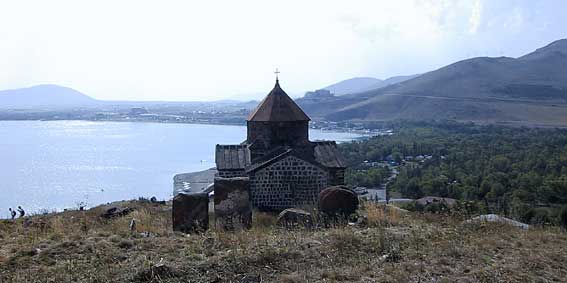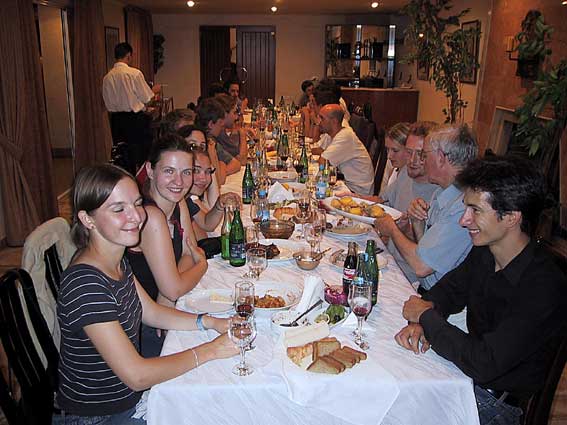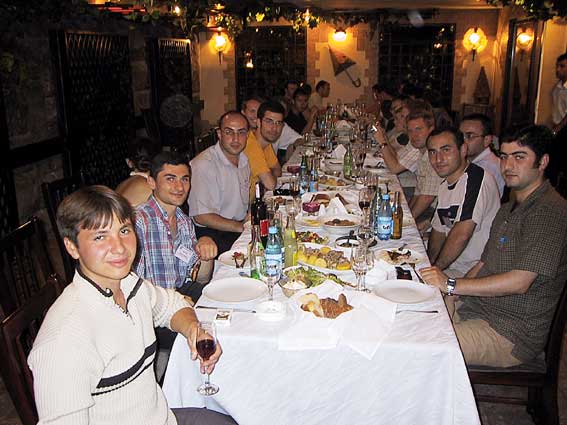
Excursions
Mt. Aragats
Chippendale Competition
Links to student photos
The eleventh in the new series of the European School of High-Energy Physics, which took place in Tsakhkadzor, Armenia, from 24 August to 6 September, was attended by sixty-nine students coming from eighteen different countries (plus four Armenian students invited as listeners). The School was hosted in the “House of the Writers” a somewhat old-fashioned hotel located in Tsakhkadzor, a small town about 50 km north of Yerevan. The origin of this place goes back to the 11th century when the magister Grigor Pahlavuny had founded a church named as Kecharis (later it was renamed Tsakhkadzor which means “canyon of the flowers “ in Armenian. Nowadays this complex of four beautiful churches with patterned cross-stones is the pride of Armenian architecture. The little town - a well-known ski resort in the 60’s - is located in a valley surrounded by very nice mountains.
According to the tradition of the School, the students were sharing twin rooms, mixing nationalities and in particular Eastern with Western participants. Doctor George Pogosyan from the Yerevan State University was acting as local director of the School.
The meals were served on a buffet style. The food was typically Armenian with a lot of vegetables stuffed with meat. Three different soups were invariably served at lunch.
The lectures were held in the large, beautiful conference room with wooden walls. The students displayed their work in the form of posters on a special evening session the first week. The poster session was a grat success, and the posters, which were put up on the walls of the large reception hall of the Hotel, were taken down only the last day of the School.
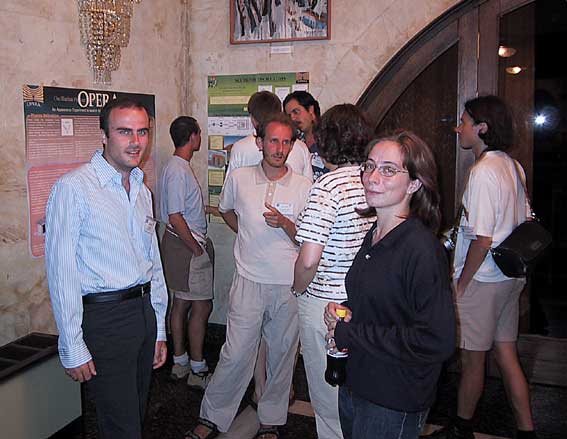
During their free time the students had the possibility of making nice walks in the forests or in the mountains surrounding Tsakhkadzor. Nice trails starting right at the back of the hotel were leading to places with beautiful views over the landscape and the mountains and were Lake Sevan could be seen in the distance. Along the same paths a former “Soviet Winter Olympic village” could be found. This sport complex was built in 1960 and was especially used by the Soviet teams training for the Olympic Games in Mexico (1968) as Tsakhkadzor is located at the same elevation (more or less 2000 meters above sea level). The most courageous students were using an old ski lift leading up into the mountains.
Also the Hotel’s swimming pool was frequently used (i.e. day and night!).
After dinner the participants were happily gathering in the bar for drinking Armenian Cognac or in the reception hall for softer beverages and a lot of fun with music, dancing and singing.
Unfortunately a large fraction of the participants went down with atomach pain and high fever. But due to efficient care by the Hotel Manager, who happened to be a nurce, and a doctor, who happened to be staying at the hotel, most of the "patients" were up and going after only a day or two. We are very greatful to doctor Avagyan who prolonged his stay at the hotel, and who helped stopping the epidemic and made it possible for nearly everybody to conntinue their participation both in the lectures and the social activities..
EXCURSIONS
Several memorable excursions were organized: The first Wednesday was a visit to the Matanaderan, the Institute of old manuscripts, with fragments from 5th/6th century, medieval manuscripts and with the only existing version of Ibn Batuta’s (Avicenna’s) book on geometry and which demonstrates that gravity was discussed from early medieval times. This was followed by the Opening of the CERN traveling exhibition “Science bringing nations together” at the Yerevan State University.
The last part of the excursion was a visit to Garni and Gerard, two famous places not far from Yerevan.
Garni is a nice little city, with vineyards and fruit orchards where the main attraction is the pagan Greek Mithras temple dating back to 1st Century AD. It was destroyed by an earthquake in 1670 and reconstructed in 1975. The temple is erected on a basalt base on top of the river Asat. There is magnificent view over the canyon and the surrounding mountains. The ruins around are those of the Garni Citadel, which was the summer residence of the Armenian kings in the third and fourth century. A beautiful concert by a little choir was also highly appreciated.
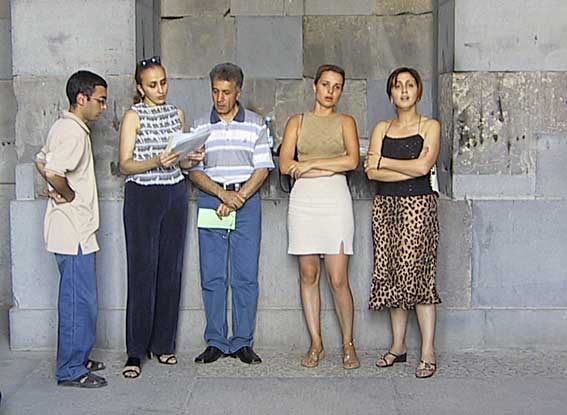
Geghart, situated close to the gorge of the river Asat, consists of a Monastery and two chapels carved deep into the rock and is a fantastic example of medieval Armenian architecture. “Wishing trees” close the Monastery were “decorated” with strips of cloth each one representing a wish or a prayer. Inside the church after a dark corridor is the oldest chapel cut in the rocks. This chapel is about 8 square meters and has 4 columns supporting a cupola, which is nearly 9 m high. This room is breathtaking, and its quiet and spiritual atmosphere touches every visitor. The sun illuminates the room through a decorated opening in the roof. The choir gave another little concert in the chapel which tuned out to have a most fantastic accustics.
Leaving Geghart the school had got an additional participant. In fact Tuan was nearly upside down when he discovered a white pigeon, which could not fly. He decided to take the bird back to the hotel where he took care of it during the remaining part of the school.
See also
http://www.planetware.com/photos/ARM/ARM012.htm
http://www.avantart.com/armenia/geghart.html
http://www.silkroadtours.co.uk/armenia.html
Sunday 30 August an excursion was organized to visit the cosmic ray high altitude station on Mt. Aragats. We made a first stop at the Nor-Ambert station, at 2000 meters where Professor Ashot Chilingarian, head of the Cosmic Ray Division, gave a lecture about the scientific activities. The station was built in 1943 by the Alikhanian Brothers. After the lecture and a nice picnic the excursion continued to the Aragats station at 3200 meters.
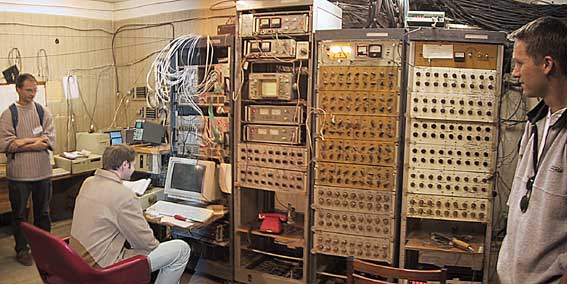
New science with old electronics at high altitude.
